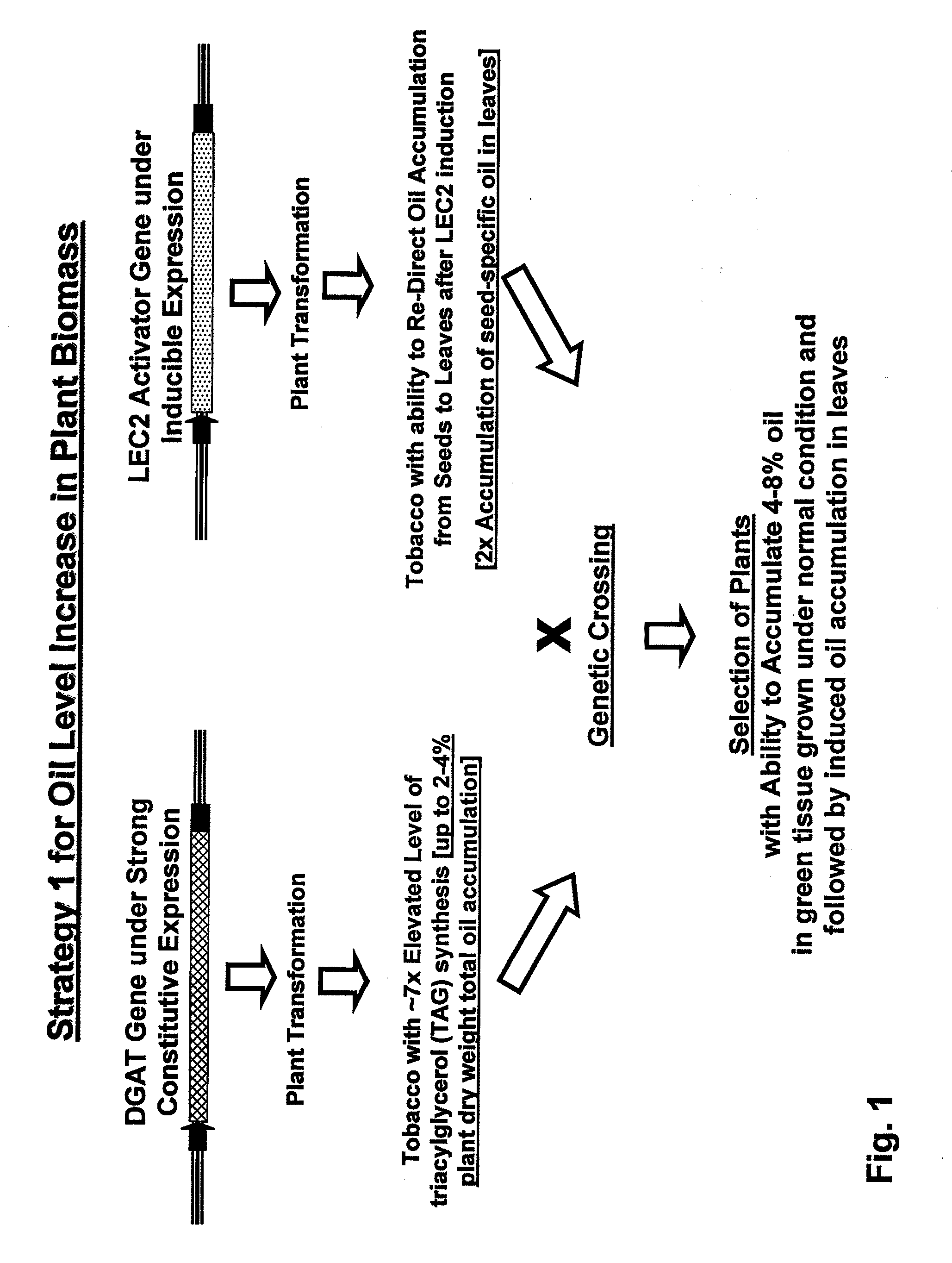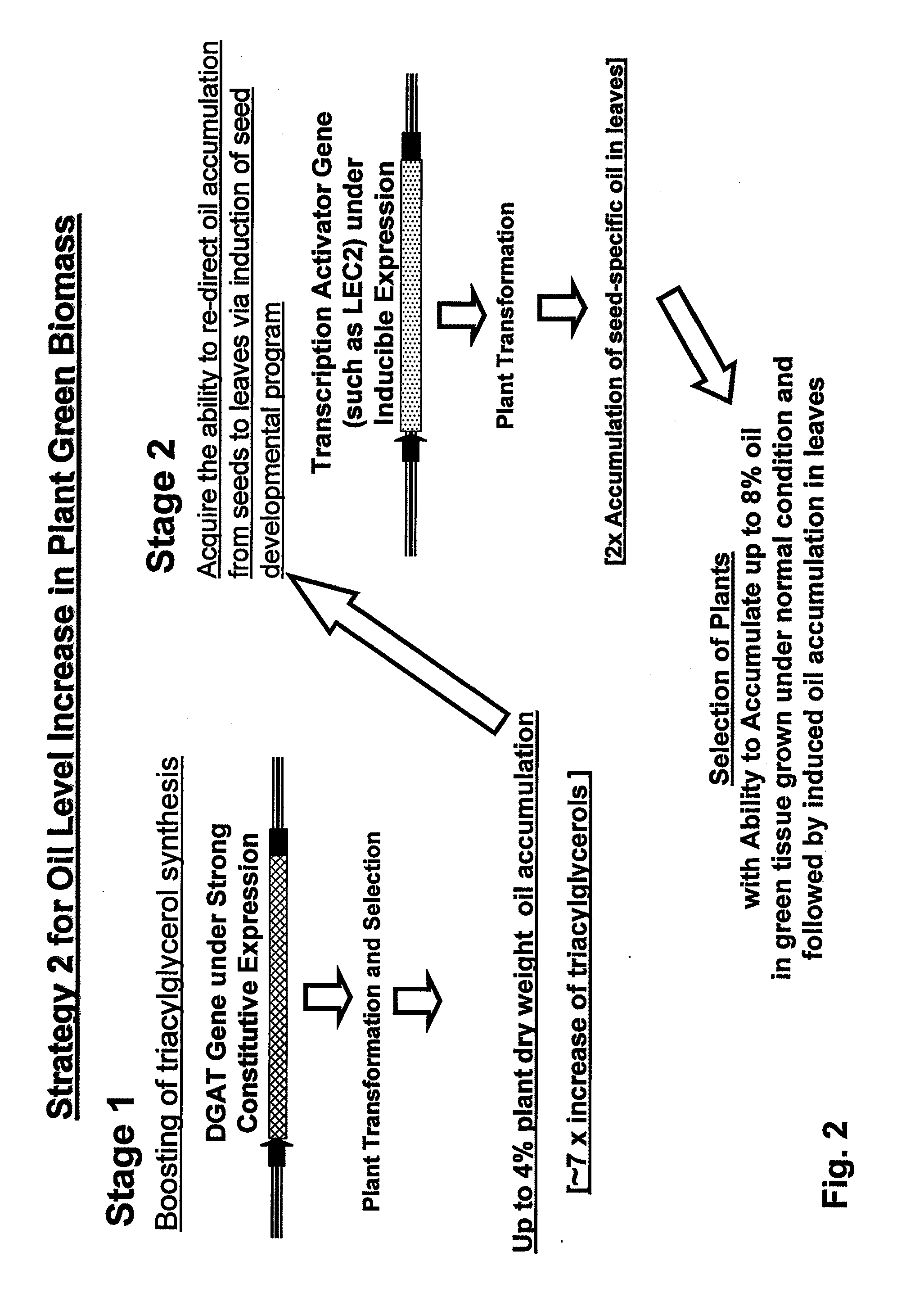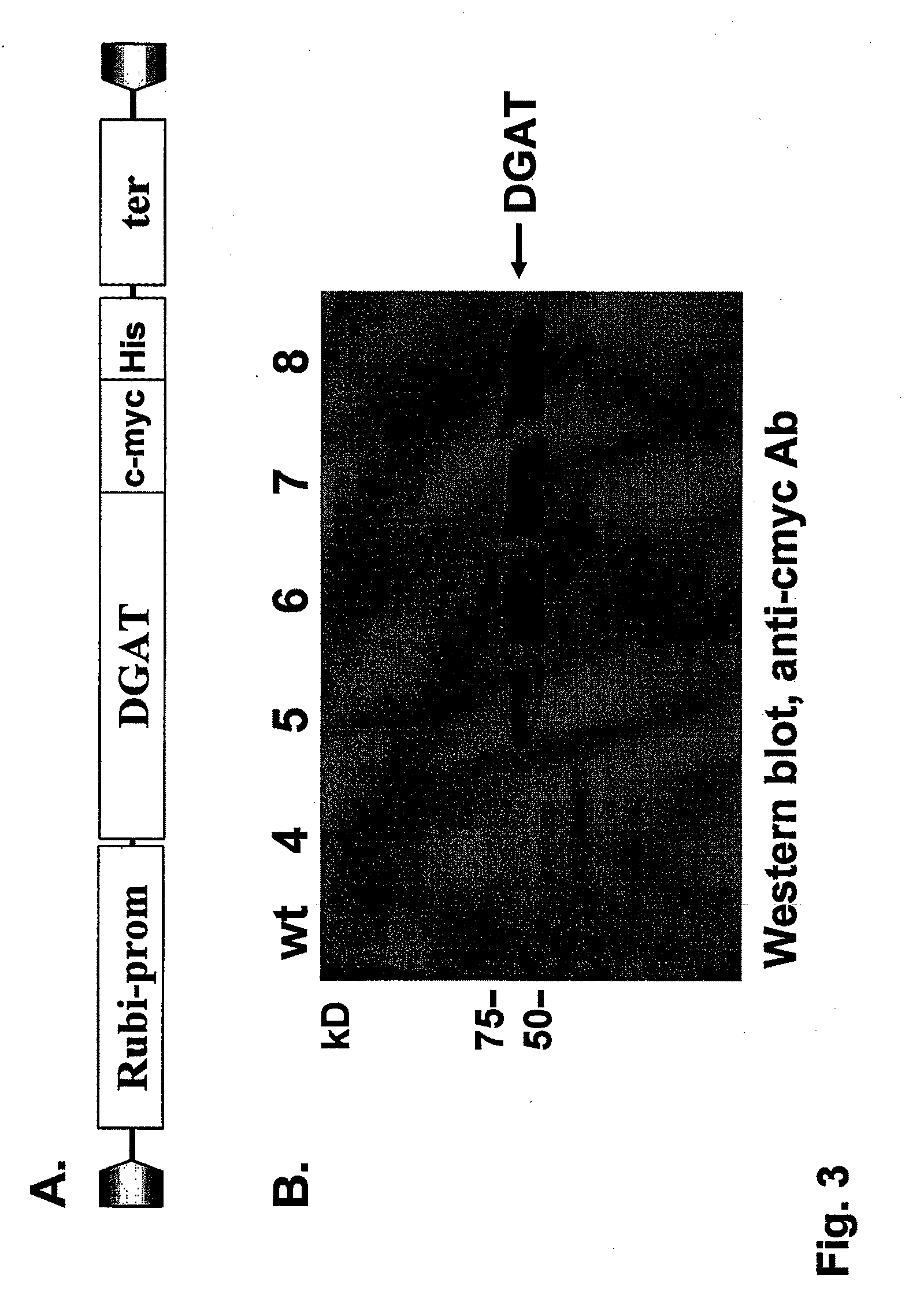Engineered biomass with increased oil production
a technology of engineered biomass and oil production, applied in the field of genetically modified plants, can solve the problems of high downstream oil extraction cost and much lower oil deposition of leaves, and achieve the effects of increasing expression, increasing oil, and increasing expression
- Summary
- Abstract
- Description
- Claims
- Application Information
AI Technical Summary
Benefits of technology
Problems solved by technology
Method used
Image
Examples
example 1
Construction of Plant Transformation Binary Vector
[0118]cDNA fragments encoding for acyl CoA:diacylglycerol acyltransferase from Arabidopsis thaliana (AtDGAT; GeneBank Accession #BT008883; SEQ ID NO:1) are arranged into a pBI121-derived binary vector (Clonetech, Palo Alto, Calif.) as follows. AtDGAT is amplified via PCR with primers containing NcoI and NotI sites (5′-gAA ACC ATg gCg ATT TTg gAT TCT gC-3′(SEQ ID NO: 2) and: 5′-ATC TgC ggC CgC TgA CAT CgA TCC TTT TCg gT-3′ (SEQ ID NO: 3), and is cloned in multiple cloning site of an intermediate Impact Vector pIV1.1tag under the control of Rubisco (rbcS) strong promoter with rbcS terminator. The resulting construct was confirmed by DNA-sequencing. The whole cassette was then subcloned in pBI-derived pBINPLUS binary vector. In another version the coding region of same AtDGAT gene was cut from intermediate vector using NcoI-NotI restriction enzymes and cloned in pBI121 vector under the cauliflower mosaic virus (CaMV) 35S strong promoter...
example 2
Plant Transformation
[0120]Tobacco leaf explants (Nicotiana tabacum cv. Wisconsin) are used for Agrobacterium-mediated transformation (A. tumefaciens EHA105) in MS-based media (Hiatt et al. (1989) Nature 342:76-78) according to the described protocols (Ko et al. (2000) supra). Tobacco transgenic lines are generated by Agrobacterium-mediated plant transformation with a vector carrying DGAT. Independent transgenic lines were selected on kanamycin (100 μg / ml). Transgenic tobacco lines were later maintained in soil, and subsequent generations (T1 and T2) were obtained by self-fertilization.
[0121]Tobacco leaf explants (Nicotiana tabacum cv. Wisconsin) are used for Agrobacterium-mediated transformation (A. tumefaciens EHA105) in MS-based media (Hiatt et al. (1989) Nature 342:76-78) according to the described protocols (Ko et al. (2000) supra). Tobacco transgenic lines are generated by Agrobacterium-mediated plant transformation with a vector carrying LEC2. Independent transgenic lines were...
example 3
Molecular Characterization of Transgenic Plants
[0123]PCR amplification of both DGAT and LEC2 is performed with genomic DNA of each transgenic line using the same primers as described above. Protein expression analysis of both DGAT and LEC2 was confirmed by western blot.
PUM
| Property | Measurement | Unit |
|---|---|---|
| pH | aaaaa | aaaaa |
| weight | aaaaa | aaaaa |
| heat- | aaaaa | aaaaa |
Abstract
Description
Claims
Application Information
 Login to View More
Login to View More - R&D
- Intellectual Property
- Life Sciences
- Materials
- Tech Scout
- Unparalleled Data Quality
- Higher Quality Content
- 60% Fewer Hallucinations
Browse by: Latest US Patents, China's latest patents, Technical Efficacy Thesaurus, Application Domain, Technology Topic, Popular Technical Reports.
© 2025 PatSnap. All rights reserved.Legal|Privacy policy|Modern Slavery Act Transparency Statement|Sitemap|About US| Contact US: help@patsnap.com



